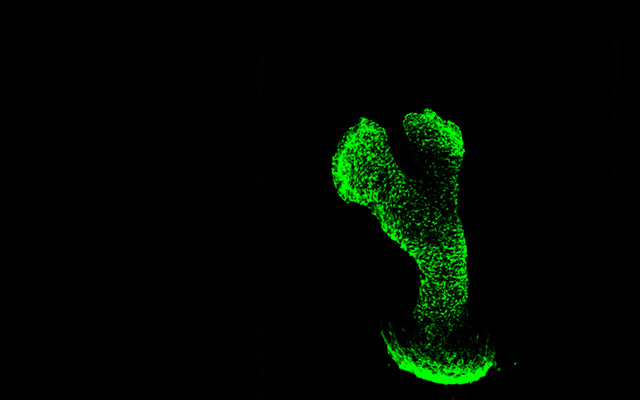The Protective Effect of Eriodictyol on Lung Tissue of Young Mice with Mycoplasma Pneumonia by Regulating IL-6/STAT3 Signaling Pathway
LIN Shan1*, WANG Yun2, LIU Zhe1, ZHAO Xin1
This paper investigated the protective effect of ERD (Eriodictyol) on the lung tissue of young mice with MP (mycoplasma pneumonia) by regulating the IL-6 (interleukin-6)/STAT3 (signal transducer and activator of transcription 3) signaling pathway. An MP mouse model was constructed, and successfully modeled mice were stochastically assigned into Model group, low-dose ERD group, medium-dose ERD group, high-dose ERD group, and rIL-6 (IL-6/STAT3 signaling pathway activator) group, each had 10 mice. In addition, 10 normal mice were included as the Con group, and an equal amount of sodium chloride solution was given to both the Con group and the Model group. The wet weight index of mouse lungs was measured. Fully automatic blood gas analyzer was used to detect arterial oxygen partial pressure and carbon dioxide partial pressure in mice. HE staining and Masson staining were performed to observe the pathological changes in mouse lung tissue. TUNEL staining was performed to observe apoptosis of mouse lung tissue cells. ELISA was used to detect the inflammatory related factors in mouse serum. Western blot was performed to detect the apoptosis related proteins and IL-6/STAT3 signaling pathway related proteins in mouse lung tissue. The results showed that the pathological damage of lung tissue in the Model group was severe, with inflammatory cell infiltration and a large amount of collagen fiber deposition. The lung wet weight index, partial pressure of carbon dioxide, and apoptosis rate in the Model group were higher than those in the Con group. The expressions of Bax, Caspase-3, and p-STAT3/STAT3 in the lung tissue in the Model group were higher than those in the Con group, and the levels of serum IL-8, TNF-α, IL-1β, and IL-6 were higher than those in the Con group (P<0.05). In the Model group, the blood oxygen partial pressure was lower than that in the Con group, the serum IL-10 level was lower than that in the Con group, and the expression of Bcl-2 in the lung tissue was lower than that in the Con group (P<0.05). The low-dose, medium-dose, and high-dose ERD groups showed reduced pathological damage to lung tissue, decreased inflammatory cell infiltration and collagen fiber deposition. In the low-dose, medium-dose, and high-dose ERD groups, the lung wet weight index, carbon dioxide partial pressure, cell apoptosis rate were lower than those in the Model group. In the low-dose, medium-dose, and high-dose ERD groups, the expressions of Bax, Caspase-3, p-STAT3/STAT3 in lung tissue were lower than those in the Model group, and the levels of serum IL-8, TNF-α, IL-1β, IL-6 were lower than those in the Model group (P<0.05). In the low-dose, medium-dose, and high-dose ERD groups, the blood oxygen partial pressure was higher than that in the Model group, and the IL-10 level was higher than that in the Model group. The expression of Bcl-2 than that in lung tissue was higher than that in the Model group (P<0.05). The lung tissue pathological damage of mice in the rIL-6 group worsened, with increased inflammatory cell infiltration and collagen fiber deposition. The lung wet weight index, partial pressure of carbon dioxide, and apoptosis rate were lower than those in the ERD high-dose group. The expressions of Bax, Caspase-3 and p-STAT3/STAT3 in lung tissue were higher than those in the ERD high-dose group. The levels of serum IL-8, TNF-α, IL-1β, and IL-6 were higher than those in the high-dose ERD group (P<0.05). The blood oxygen partial pressure was lower than that in the ERD highdose group, and the serum IL-10 was lower than that in the ERD high-dose group. The expression of Bcl-2 in lung tissue was lower than that in the ERD high-dose group (P<0.05). To sum up, ERD exerts a protective effect on the lung tissue of MP mice by inhibiting IL-6/STAT3 signaling pathway and suppressing inflammatory cell infiltration.




 CN
CN EN
EN